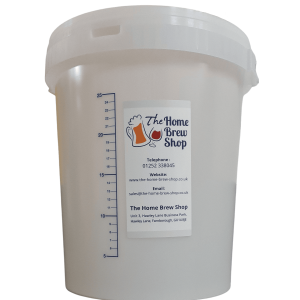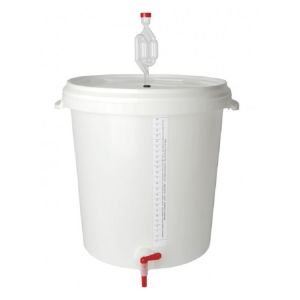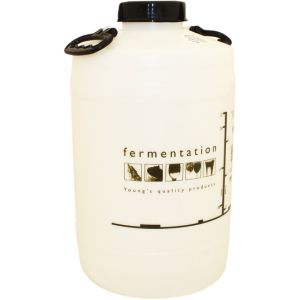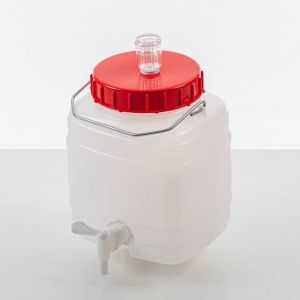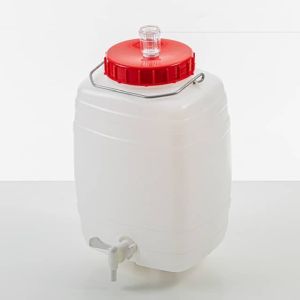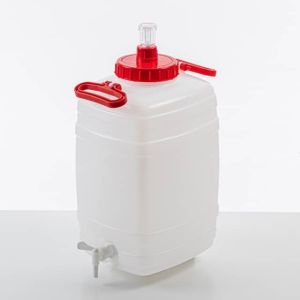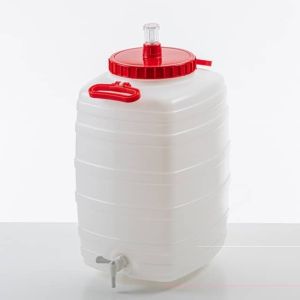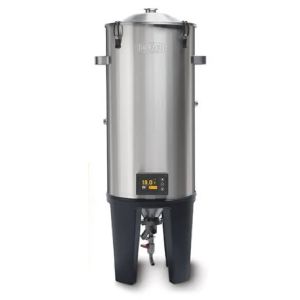Fermenters - Bins - Buckets - Fermenter
Fermenting Bins and Fermenting Buckets
Get the perfect environment for your home brewing with our Fermenting Bins & Buckets. Durable, airtight, and easy to clean. Start brewing today!
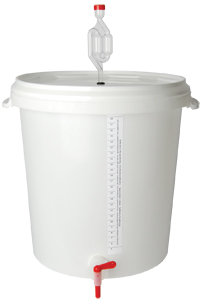
- 15L Unbreakable Demijohn | Browin£24.96 £20.80
- 25 Litre Unbreakable Demijohn | Browin£31.68 £26.40
- 20L Unbreakable Demijohn Browin£28.56 £23.80
- 5 Litre Glass Carboy with Nylon Straps | Browin£8.28 £6.90
-
- Carboy Bumper£12.60 £10.50
- Stainless Steel Fermenter 30 Litres£99.96 £83.30
- 25L Wide Neck Fermenter with Tap£24.00 £20.00
- 25L Unbreakable Demijohn Browin£31.68 £26.40
-
- Multifuntional 5Ltr Jar for Fermenting | Browin£6.60 £5.50
- 10L Unbreakable Demijohn | Browin£21.00 £17.50
- 30 Ltr Browin Fermenter£16.62 £13.85
-
-
- Bucket With Tap | 32 Litre | With Scale and Airlock£16.98 £14.15
-
-
- 15 Ltr Browin Fermenter£12.60 £10.50
- Fermenting Bin and Lid 10 ltr£6.24 £5.20
- Fermenting Bin and Lid 15 ltr£8.52 £7.10
- Fermenting Bin and Lid 25ltr£12.48 £10.40
-
-
-
-
-
-
- 25 Litre Fermenter with Tap and Airlock | Genius£28.98 £24.15
- 50 Litre Fermenter with Tap and Airlock | Genius£48.60 £40.50
-
- Blue Tubing Holder 6mm - 15mm£2.40 £2.00
-
-
- Conical Fermenter GF30 Grainfather£576.00 £480.00
- Fermzilla Carry Handle£7.80 £6.50
- Carboy Bung to fit 23 Litre Carboy£1.36 £1.13
- FastFerment Hollow Gasket£2.40 £2.00
-
Fermenting bins and buckets are essential tools for home brewing, as they provide a safe and controlled environment for yeast to ferment the beer, wine, cider, or other beverages you are making.
Our selection of fermenting bins and buckets are made from high quality materials, ensuring durability and longevity.
Which helps to maintain the proper temperature and prevent contamination. Additionally, they are easy to clean, making the cleaning process quick and simple.
-
What is a Fermenter?
A fermenter is a vessel used in the brewing process to ferment wine, beer pr cider. During fermentation, yeast is added to the brew and begins to consume the sugars, producing alcohol and carbon dioxide as byproducts. The fermenter provides a controlled environment for the yeast to do its work.
Types of Fermenters
There are several types of fermenters available on the market, each with its pros and cons. Here are some of the most common types:
Plastic Buckets
Plastic buckets are an affordable and popular choice for homebrewers. They are lightweight, easy to clean, and come with a lid and airlock. However, they can scratch easily, making them difficult to sterilise.
Glass Carboys
Glass carboys are another popular choice for homebrewers. They are sturdy, easy to clean, and don't scratch easily. However, they are heavy and can break if dropped.
Stainless Steel
Stainless steel fermenters are durable, easy to clean, and don't scratch easily. They are also more expensive than plastic or glass fermenters.
Conical Fermenter
Best for Beer, conical fermenters are becoming more popular among homebrewers. They allow for easier yeast harvesting and the cone shape allows for easier separation of trub (the sediment that settles at the bottom of the fermenter). However, they are more expensive than other types of fermenters.
How to Use a Fermenter
Using a fermenter is a relatively simple process, but there are some key steps to follow to ensure a successful fermentation. Here's a basic overview:
-
Sterilise the fermenter: Before adding the brew, make sure the fermenter is thoroughly cleaned and sterilised to prevent contamination.
-
Once the fermenter is sanitized, add the brew to the fermenter.
-
Pitch the yeast: Add the yeast to the fermenter according to the instructions on the package.
-
Seal the fermenter: Seal the fermenter with a lid and airlock to allow carbon dioxide to escape while preventing outside air from getting in.
-
Ferment the brew and store the fermenter in at 18 -25oC, in dark place and let the yeast do its work. Check the fermenter periodically to ensure the fermentation process is going smoothly.
-
Once the fermentation process is complete, keg the beer, bottle the wine and enjoy!
Tips for Using a Fermenter
Here are some additional tips to help you get the most out of your fermenter:
-
Keep the fermenter away from light: Light can negatively affect the flavour of beer, so it's important to store the fermenter in a dark place.
-
Monitor the temperature: Yeast is sensitive to temperature, so it's important to keep the fermenter in a cool place. Check the instructions on the yeast package for recommended temperatures.
-
Use a hydrometer: A hydrometerr is a tool used to measure the gravity (density) of the beer. This can help you determine when the fermentation process is complete.
-
Consider secondary fermentation: Some brewers opt for a secondary fermentation process, which involves transferring the beer to a second ferment
-
You can use many different fermenters to make kits wine and Cider kits
-










